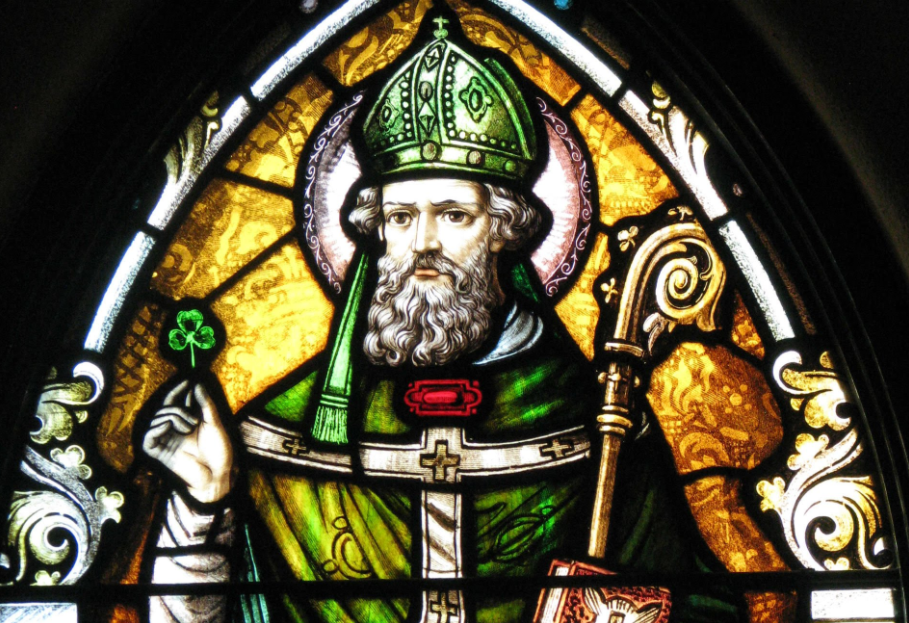St. Patrick’s Day is a global celebration that blends culture, religion, and fun. It’s a day known for parades, wearing green, and indulging in Irish food and drinks. But how did this day come to symbolize all things Irish, and why is it celebrated with such enthusiasm across the world? Let’s dive into the fascinating history behind St. Patrick’s Day and why it became the cultural and religious phenomenon it is today.
Who Was St. Patrick?
The story of St. Patrick’s Day starts with its namesake, Saint Patrick, the patron saint of Ireland. Born in Britain in the late 4th century, Patrick was kidnapped by Irish raiders at the age of 16 and brought to Ireland as a slave. After six years of hardship, he escaped and returned to his family. But his journey didn’t end there. Patrick later became a Christian missionary and returned to Ireland to spread Christianity.

During his time in Ireland, Patrick famously used the three-leafed shamrock to explain the concept of the Holy Trinity—Father, Son, and Holy Spirit—to the Irish people. This simple yet effective teaching method helped him gain followers and eventually convert the Irish to Christianity. He spent the next several decades converting the Irish and building churches before passing away on March 17th, around 461 AD.
Why March 17th?
March 17th was chosen as St. Patrick’s Day because it marks the anniversary of Saint Patrick’s death. His contributions to the Irish people were so profound that the Catholic Church honored him by declaring him a saint, and the day of his death became a day of celebration.
Interestingly, St. Patrick’s Day was originally a religious feast day, observed in Ireland to honor the saint’s life and missionary work. It was a day for church services, prayers, and remembrance.
The Evolution of St. Patrick’s Day
Though St. Patrick’s Day began as a religious observance, it gradually became more about celebrating Irish heritage and culture. This transformation can be traced back to Irish immigrants in the United States. In the 18th and 19th centuries, many Irish people moved to the U.S., particularly in cities like New York, Boston, and Chicago. As they sought to preserve their identity in a new land, they began to celebrate their roots with pride, and St. Patrick’s Day became a way to showcase Irish culture.
The first St. Patrick’s Day parade, surprisingly, wasn’t in Ireland, but in New York City in 1762. Irish soldiers serving in the British Army marched through the streets, and it soon became an annual tradition. The parades grew larger and more elaborate over time, turning St. Patrick’s Day into a festive occasion filled with music, dancing, and a sense of unity among Irish Americans.
From Religious Observance to Global Celebration
As St. Patrick’s Day spread across the globe, it became less about religious observance and more about celebrating Irish identity and culture. In the 20th century, the commercialization of the holiday helped fuel its global expansion. Symbols like the shamrock, leprechauns, and the color green became synonymous with the day, reinforcing its ties to Irish heritage.
In Ireland, St. Patrick’s Day was officially celebrated as a public holiday in 1903, but it wasn’t until the late 20th century that the festival took on a more festive, nationalistic tone. Parades, concerts, and festivals now take place across the island, showcasing Irish music, dance, and food.
Today, St. Patrick’s Day is celebrated not only in Ireland and the U.S. but all over the world. From Sydney to Tokyo, people wear green, drink Irish beer, and join in the revelry. The global popularity of the day is a testament to the widespread appeal of Irish culture, as well as the spirit of joy and community that the holiday represents.
Why Do We Celebrate with Green, Shamrocks, and Leprechauns?
The color green, which is now synonymous with St. Patrick’s Day, has roots in Ireland’s lush landscape and its association with the Emerald Isle. It also ties back to the shamrock, the plant Saint Patrick used to explain the Holy Trinity. Over time, the shamrock became a symbol of Ireland itself, and wearing green on St. Patrick’s Day became a tradition. If you don’t wear green, legend says you might get pinched!
Leprechauns, on the other hand, are a playful addition to the holiday’s lore. These mischievous, bearded fairies from Irish mythology have become part of the fun surrounding St. Patrick’s Day. The idea of finding a pot of gold at the end of a rainbow adds to the whimsy and fantasy of the celebration.
St. Patrick’s Day Today
St. Patrick’s Day has evolved into a vibrant, inclusive celebration of Irish culture and heritage, far beyond its religious origins. It’s a day for everyone to join in the fun, whether or not they have Irish roots. Parades, parties, and festivals have become global events, and the tradition of wearing green and enjoying Irish food and drinks, like corned beef and Guinness, continues to thrive.

Though the day has certainly become commercialized, its origins as a tribute to a man who dedicated his life to helping others are still honored. Whether you’re attending a parade in Dublin or enjoying an Irish meal at a pub in New York, St. Patrick’s Day remains a day of celebration, pride, and connection to Irish history and culture.
St. Patrick’s Day has come a long way from its humble beginnings as a religious feast day to the global celebration it is today. From honoring the life of Saint Patrick to embracing Irish culture, it’s a day that unites people from all walks of life.
So, next time you don your green attire or enjoy a pint of Guinness, remember that you’re taking part in a centuries-old tradition that has brought joy, pride, and a sense of community to people all over the world.
